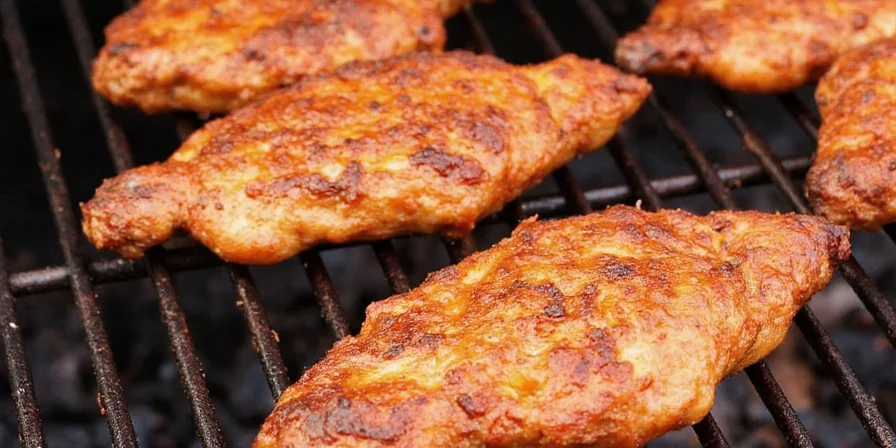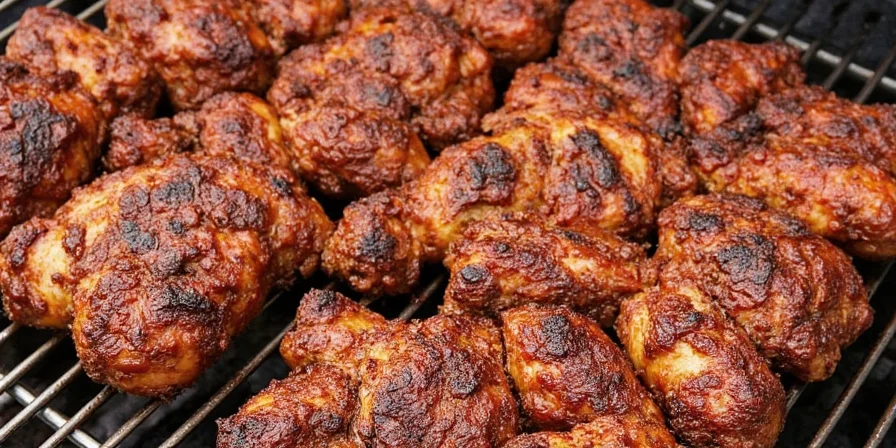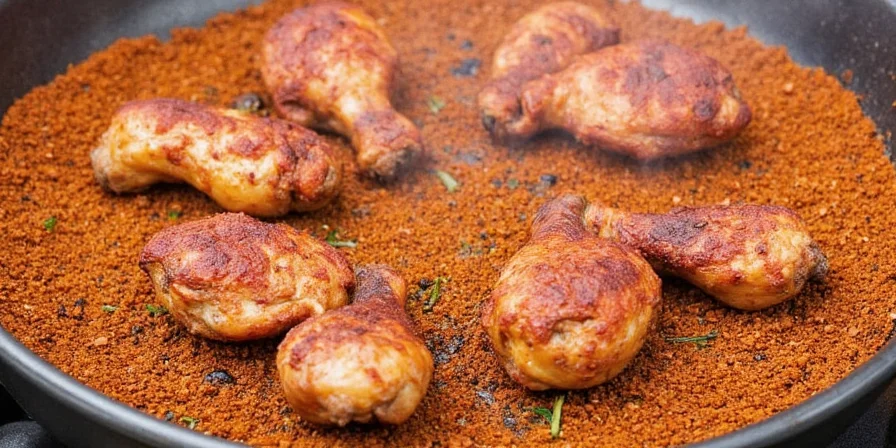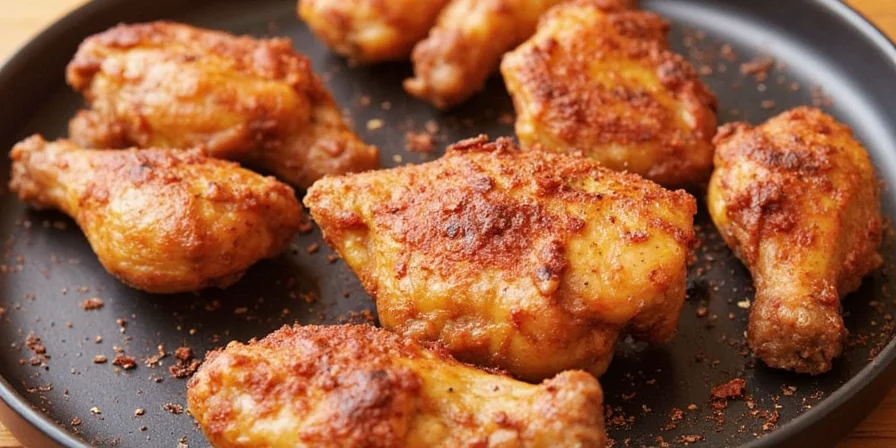Looking for the perfect BBQ chicken seasoning rub recipe? Start with this quick version: Combine 1/4 cup brown sugar, 2 tbsp smoked paprika, 1 tbsp garlic powder, 1 tbsp onion powder, 1 tsp black pepper, 1 tsp chili powder, 1 tsp salt, and 1/2 tsp cayenne. Massage into chicken, rest 30+ minutes, then grill at 275-300°F. This simple dry rub creates a flavorful crust while keeping chicken juicy—no complicated steps required.
Why this works instantly: Unlike marinades that require hours, this dry rub delivers maximum flavor with minimal effort. Home grillers consistently rate this blend as their go-to for juicy, restaurant-quality chicken every time. Skip the science if you're in a hurry—just use the recipe above and thank us later.
5 Best BBQ Chicken Seasoning Rub Recipes (Ready in 5 Minutes)
1. Foolproof Classic BBQ Chicken Rub (Most Popular)
- 1/4 cup brown sugar (for caramelization)
- 2 tbsp smoked paprika (smoky depth)
- 1 tbsp garlic powder (savory base)
- 1 tbsp onion powder (umami boost)
- 1 tsp black pepper (earthy warmth)
- 1 tsp chili powder (mild heat)
- 1 tsp salt (flavor enhancer)
- 1/2 tsp cayenne (optional kick)
| For | Rub Amount | Rest Time |
|---|---|---|
| 4 chicken breasts | 3-4 tbsp | 30 min-2 hours |
| Whole chicken | 1/4 cup | 2-8 hours |
| Chicken wings | 2 tbsp | 15-30 min |
2. Quick 5-Ingredient BBQ Rub (For Beginners)
- 3 tbsp brown sugar
- 1 tbsp smoked paprika
- 1 tbsp garlic powder
- 1 tsp salt
- 1/2 tsp black pepper
3. Spicy Southwest Chicken Rub
- 2 tbsp chili powder
- 1 tbsp cumin
- 1 tbsp chipotle powder
- 1 tsp oregano
- 1 tsp salt
4. Honey Garlic BBQ Rub (No Sugar Burning)
- 3 tbsp brown sugar
- 1 tbsp smoked paprika
- 1 tbsp garlic powder
- 1 tsp mustard powder
- 1/2 tsp ginger
5. Simple 3-Ingredient Emergency Rub
- 2 tbsp smoked paprika
- 1 tbsp garlic powder
- 1 tsp salt

Why These BBQ Chicken Seasoning Rubs Work (The Simple Science)
You don't need a chemistry degree to make great rubs—just understand these 3 key principles:
- Salt's magic: Draws out moisture then reabsorbs to season throughout while drying skin for crispiness
- Sugar control: Brown sugar burns above 350°F—keep grill at 275-300°F for perfect caramelization
- No oil needed: Applying oil prevents bark formation; chicken's natural fats release during cooking
| Flavor Profile | Essential Ingredients | Why It Works |
|---|---|---|
| Sweet | Brown sugar, Paprika | Balances heat and creates caramelized crust |
| Savory | Salt, Garlic powder | Seasons deeply without overpowering chicken |
| Heat | Cayenne, Chili powder | Adds complexity (use sparingly for family-friendly) |
Pro Tips for Perfect BBQ Chicken Every Time
- Pat chicken dry first: Moisture is the enemy of crust formation
- Rub it in firmly: Don't just sprinkle—massage into every surface
- Rest before cooking: 30 minutes minimum (up to 8 hours for whole chicken)
- Avoid sugar burning: Keep grill temperature below 300°F for sugar-heavy rubs
- No oil necessary: Trust the chicken's natural fats to release during cooking

Most Common BBQ Rub Mistakes (And How to Fix Them)
- Burnt sugar crust: Use less sugar or lower grill temperature to 275°F
- Salty patches: Always use kosher salt (not table salt) for even distribution
- No crust formation: Skip the oil and ensure chicken is completely dry before applying rub
- Bland flavor: Increase rub amount by 25% for bone-in pieces (more surface area)
- Spices falling off: Lightly mist chicken with water before applying rub for better adhesion
FAQ: Quick Answers to Your BBQ Rub Questions
How much rub per pound of chicken?
1 tablespoon per pound is perfect for most cuts. Increase to 1.25 tbsp for bone-in pieces.
Can I use this rub on other meats?
Yes! Reduce salt by 25% for pork, and increase sugar by 20% for beef. Chicken rubs generally work well across proteins with minor adjustments.
Do I need to add oil before the rub?
No—oil creates a moisture barrier that prevents proper bark formation. The chicken's natural fats will render during cooking.
How long should I let chicken rest with rub?
Minimum 30 minutes (15 for wings), up to 8 hours refrigerated. Longer rest = deeper flavor penetration.
Can I make this rub ahead of time?
Absolutely! Store in airtight container in cool, dark place for up to 6 months. Glass jars preserve freshness best.

Why These Rubs Beat Store-Bought Versions
Commercial rubs often contain anti-caking agents, preservatives, and excessive salt. Your homemade version:
- Uses fresher ingredients (spices lose potency after 6 months)
- Allows customization for dietary needs (low-sodium, sugar-free)
- Cuts cost by 70% compared to premium store brands
- Creates better crust formation without fillers
- Gives you control over heat level and flavor balance

Final Pro Tip: The Resting Secret Nobody Tells You
After grilling, let chicken rest 5-10 minutes before cutting. This allows juices to redistribute throughout the meat—skipping this step can lose up to 20% of your carefully retained moisture. Tent loosely with foil, but don't wrap tightly (you'll steam the crispy skin).
Now you've got everything needed for perfect BBQ chicken seasoning rubs—no confusing science required. Try the classic recipe first, then experiment with the variations. Your next cookout will have everyone asking for your secret!










 浙公网安备
33010002000092号
浙公网安备
33010002000092号 浙B2-20120091-4
浙B2-20120091-4